 My daughters and I built a model of our future straw bale cabin out of popsicle sticks. Everything is held together with glue from a glue gun (hardens in seconds). It's to scale [1" = 1'], so 16" x 24" . . . whereas the cabin will be 16' x 24'.
My daughters and I built a model of our future straw bale cabin out of popsicle sticks. Everything is held together with glue from a glue gun (hardens in seconds). It's to scale [1" = 1'], so 16" x 24" . . . whereas the cabin will be 16' x 24'.I'm still attached to my shed roof/loft idea. With a small footprint (388 sq ft), I think it's important to have high ceilings to make it feel spacious. You're going to spend the same money on the floor and the roof anyway. And I like the idea of using all the space in the building - so a sleeping/storage loft will go in at the high side of the roof. My original height was 12' for the high side, sloping down to 9' on the low side. The loft will give a sleep/play place for my daughters so we're not always all together on one floor - it will add another 128 sq ft to the dwelling, and give it a total of 516 sq ft.
 This is an old parking slab which I will break up and use as urbanite in the rubble trench foundation. As you can see from the photo, power is right there. Water is about 150 feet away in the well house.
This is an old parking slab which I will break up and use as urbanite in the rubble trench foundation. As you can see from the photo, power is right there. Water is about 150 feet away in the well house. In searching for various small cabin alternatives to what I propose to build, it was again this photo of a shed roof cabin with clerestory windows that stood out - I know for certain this is the look I want:
In searching for various small cabin alternatives to what I propose to build, it was again this photo of a shed roof cabin with clerestory windows that stood out - I know for certain this is the look I want: Making it happen is the hard part.
Making it happen is the hard part. Would the only access to the loft be on the low side via an upright ladder? It would be difficult to wedge boxes or furniture up through this 2 1/2' high space. And climbing up would be uncomfortable, especially for an adult.
Would the only access to the loft be on the low side via an upright ladder? It would be difficult to wedge boxes or furniture up through this 2 1/2' high space. And climbing up would be uncomfortable, especially for an adult. So we decided to remove one of the three squares of loft flooring to cut it by 1/3:
So we decided to remove one of the three squares of loft flooring to cut it by 1/3: This opens it up tremendously, and now I can place a vertical loft ladder beside the loft, against the back wall on the high side - this way I've got 4' of overhead for climbing up and storing large objects.
This opens it up tremendously, and now I can place a vertical loft ladder beside the loft, against the back wall on the high side - this way I've got 4' of overhead for climbing up and storing large objects. The slate table gives a nice sense of the stone flooring that will ultimately go in.
The slate table gives a nice sense of the stone flooring that will ultimately go in. And you can see in this shot how much this alters the roof pitch:
And you can see in this shot how much this alters the roof pitch: Because I'm moving from 'shed roof' territory to 'flat roof' territory, I'm going to go with 2x8's for the rafters instead of 2x6. And with the overhang and near 40% cantilever of the boards, this was the advice of contractors I'd talked to. Sunbright typically gets very little snow (an inch or two), but it is possible in an extreme scenario to get 2'. It's happened before. So I want to make sure the roof is solid. Also the 2x8's will allow deeper insulation - if you don't insulate your ceiling well, all the benefits you get from straw bale walls are lost.
Because I'm moving from 'shed roof' territory to 'flat roof' territory, I'm going to go with 2x8's for the rafters instead of 2x6. And with the overhang and near 40% cantilever of the boards, this was the advice of contractors I'd talked to. Sunbright typically gets very little snow (an inch or two), but it is possible in an extreme scenario to get 2'. It's happened before. So I want to make sure the roof is solid. Also the 2x8's will allow deeper insulation - if you don't insulate your ceiling well, all the benefits you get from straw bale walls are lost. Here's another shot, from a different angle:
Here's another shot, from a different angle:
I made a model out of sticks and rubber bands also, but it's crude and the wood's not straight and it doesn't really tell me anything:
 Now on to how the cabin will be built.
Now on to how the cabin will be built.I'll start with the pole frame, and the roof - then all the foundation work and wall-raising will go on under roof in shade and out of the rain. The bales are simply infill in this design.
The first step is the sitework - batterboards and masonry line, so you know where everything goes. After that I can begin digging holes.
The first dilemma is whether to go with treated posts embedded directly in the ground, or pour home-made footers and tie above-ground posts into them with metal connections. There's no question the first option is the cheapest, and strongest. Metal connections for masonry to wood at 6x6 are $20 a piece. Then there's the cost of the concrete and rod for the footer, the J bolt, the formwork, and of course, the post itself. And considering the post will be in contact with masonry it really should be treated as well.
My concerns with embedment are the lifespan of wood embedded in the ground, even treated wood (especially at .4 . . . treatment should really be at least .6, and posts for marine use such as docks are treated to 2.0 - however the deeper it's treated the higher the cost and lack of availabilty - 6x6 posts treated at .4 at 16' in length are $32.50 a piece).
I've followed so many threads of discussion on whether pole embedment or footer and have gotten nowhere. There's no question that poles embedded deep in the ground (my book on pole building recommends at least 4') has incredible lateral stability. And I believe the lifespan of any foundation system depends on whether you keep water out of it, regardless of the materials. With a large roof overhang, as well as grading the land down and away from the structure at all points, you accomplish this. A perimeter perforated pipe drain can also go down into the rubble trench to make sure any water that gets in gets out.
And if you do choose to embed the post, how? On top of concrete, concrete around it, a 'concrete necklace', gravel backfill, etc. It seems what's good for strength (such as a concrete necklace, with lag bolts), is not good for drainage. So there's no one surefire solution. I would say drainage is priority #1, over strength - at least in my situation. I've got 12 poles going in from 6' to 8' apart with a good bit of lateral framing as well as the strawbale infill integrated tightly - this cabin's not going anywhere. But if the posts begin to decay . . . that's another story.
I'm leaning towards the idea of gravel base and gravel backfill, and trying to stay away from concrete, if I go with embedment. This will keep water away from the post, and that's all I ask. I'll do whatever I can to make sure water never gets near the foundation in the first place.
I was attracted to the idea of a homemade footer, and using local milled wood for the posts - but the cost is very high. If I could get metal connections for under $10 I'd go this route, but everything I've found is $20 and up. However I haven't ruled it out yet. I like the idea at this site for the footers -
http://www.hammerzone.com/archives/decks/oldporch/found/footing.htm
What's also great about going with footers (besides keeping the wood out of the ground), is working with shorter lighter posts. A 16' 6x6 (wet because it's treated) is unbelievably heavy. I'm going to need a winch to pull them upright if I'm working alone. I found a 'cable puller' for $30 at Home Depot that'll do the job - but I'll need additional cable. If I did footings, I'd be working with 10' and 12' posts - much lighter.
Once all the posts are up I'll create headers out of 2x10's using this design a fellow blogger sent me:

Just like in my barn, the 2x10's are doubled on either side of the posts to create beams. The 2x8 rafters will run across these and tie into them (birds' mouth cuts and possibly metal connections - though I could make a sturdy wood connection between blocking in the headers to the rafters). 1x purlins (strapping) runs across the rafters and provides nailing surface for the metal roof. I've found metal roofing at $2.10 a foot (actually $0.70 a foot because the metal comes in 3' wide strips).
If I go with treated 6x6 posts, the entire frame for the cabin including the roof will be around $1,500.
The next step is the rubble trench foundation around the perimeter for the straw bale walls. I'm going to slope the trench slightly down away from the inside of the structure, and slope it down and around the perimeter so I can put in perforated pipe to drain any water that gets in. This is more for the treated posts than concerns over frost heave. But it will help both. I'll dig the trench 8" deep (frost line is 6"), so I don't have to use so much gravel and urbanite in the foundation. I'll break up the parking slab with a sledgehammer.
Once the trench is in and tamped, it's on to the stem wall. I always wanted to do an earthbag stem wall for straw bale - it made such sense, because it's green and low-cost and local and the same width as the bales. But I couldn't find any information on it. Then I struck gold at this site:
Foundations for Straw Bale Buildings http://www.greenhomebuilding.com/QandA/strawbale/foundations.htm
It turns out earthbags are becoming very common as stem walls in straw bale buildings. The first two rows are filled with aggregate (stone, gravel, sand - whatever), tamped well, with barbed wire between them for tensile strength - just like earthbags. This is so if there is flooding the bottom rows of the stem wall are not washed away. Then the next rows use a stabilized earth mix - your own dirt stabilized with either lime or cement. These will cure and harden into rock. Above this is a water barrier, then the bale walls.
The polypro earthbags are protected via the chicken wire and plastering that the bale walls get. Rod is pounded down through the stem wall and rubble trench - it sticks up to impale at least the first course of bales, and if possible into the second. The curing of the stabilized earth part of the stem wall will lock the rods in place. One possible problem is moisture wicking up the rod into the bales - but I would think caulk around where the top earthbag is punctured as well as the water barrier should do the trick.
As for the bales, I'm going to find something local. Hopefully I can find 2 string bales in the $2 to $3 range.
This is about as far in the planning process as I've gone. The flooring will either be adobe (if we're broke), pavers if not. The loft will be framed off the center posts, and a ledger I'll hang off the exterior posts (the posts are going flush on the inside with the bales, so I can tie into them for framing).
I'd like to do a rocket mass heater to heat the dwelling . . . and all the graywater will be used somewhere downhill, maybe for fruit trees. The door I can get down at Habitat for Humanity in Sunbright. Hopefully most of the windows also. We'll see.
We move up April 1st, and begin building. Only 7 weeks away.
I've been writing articles for Wikihow. Most are how-to's based on articles that are already here. But this one is new material:
How to Camp as a Lifestyle
http://www.wikihow.com/Camp-As-a-Lifestyle
.







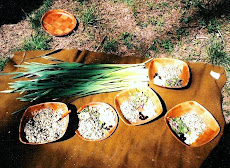









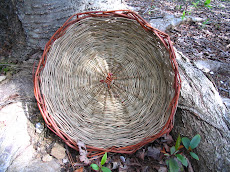



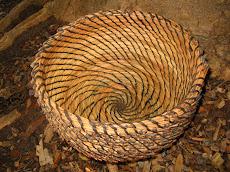



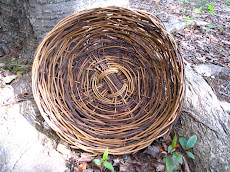

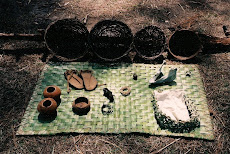


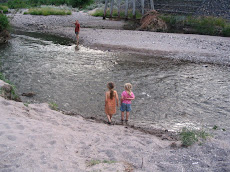

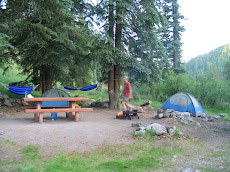


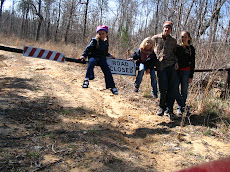






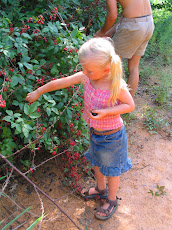








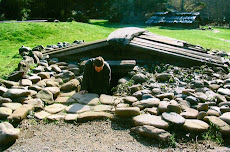

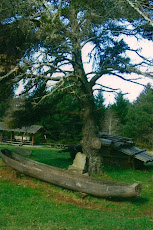



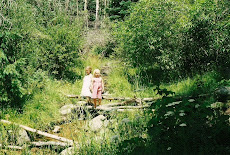

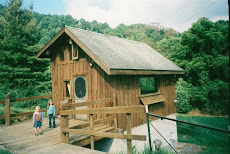


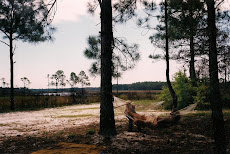

.jpg)

.jpg)

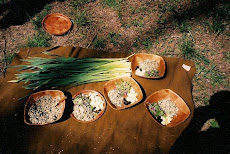

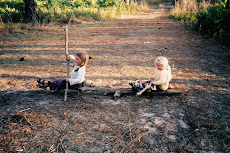.jpg)

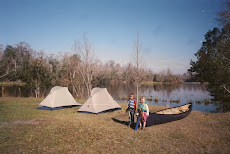

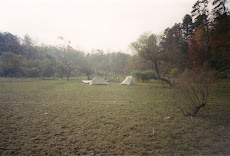

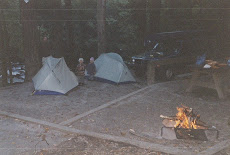


.jpg)
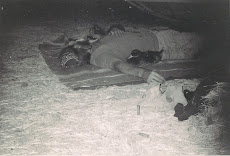.jpg)

.jpg)
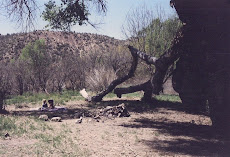.jpg)
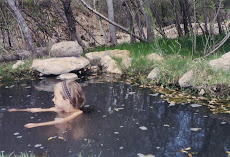
.jpg)
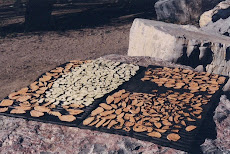
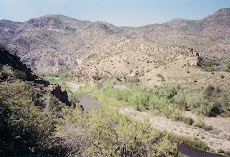.jpg)


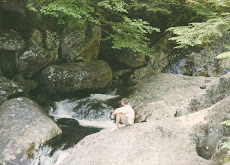





















1 comment:
I love what I have been reading, Good luck,great job,keep at it.
Post a Comment